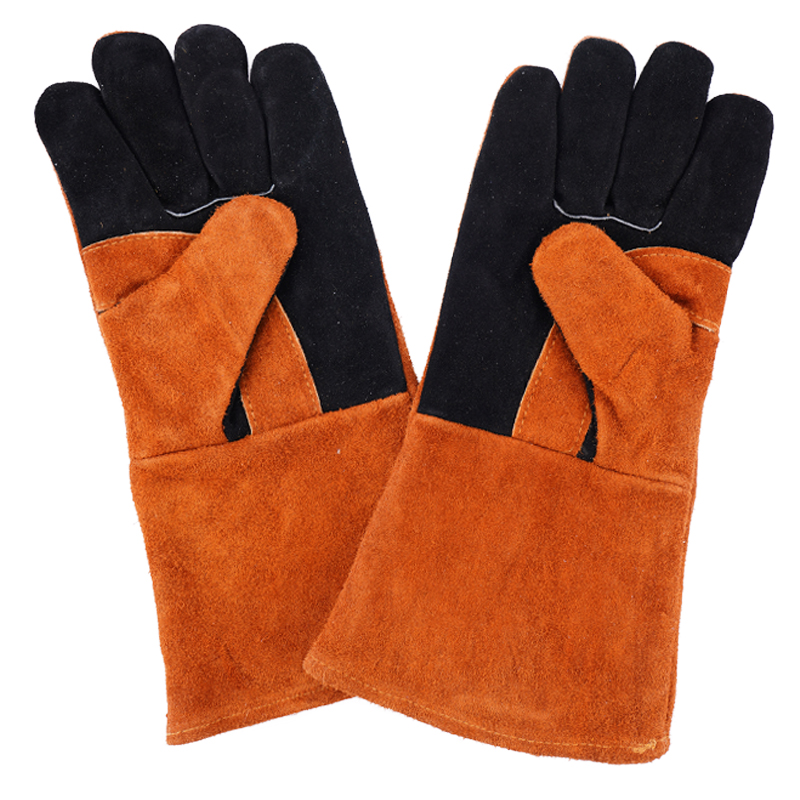The Difference Between Three-finger and Five-finger Welding Gloves
The main difference between three-finger welding leather gloves and five-finger ones lies in their design, dexterity, and intended use:

1.Design:
Three-Finger Welding Gloves:
These gloves typically have a mitten-like design with two fingers (usually the pinky and ring finger) grouped together in one section, while the other three fingers (thumb, index, and middle) each have their own section.
Five-Finger Welding Gloves:
These gloves have a standard glove design, with each finger having its own section.
2.Dexterity:
Three-Finger Welding Gloves:
Offer slightly less dexterity compared to five-finger gloves because of the grouped fingers. This design is often intended to provide better insulation and protection, particularly for the fingers that are grouped together, which might be more exposed to heat and sparks during welding.
Five-Finger Welding Gloves:
Provide better dexterity and finger movement, allowing the welder to handle tools, welding rods, and other materials with more precision.

3.Protection:
Three-Finger Welding Gloves:
Typically offer enhanced protection for the fingers that are grouped together, making them ideal for tasks where the fingers are more exposed to heat or need extra insulation.
Five-Finger Welding Gloves:
Provide more flexibility and are still protective but might offer less insulation compared to three-finger gloves, depending on the material and construction.
- Comfort and Use:
Three-Finger Welding Gloves:
These are often preferred in situations where prolonged exposure to heat is expected, and comfort for specific fingers is a priority.
Five-Finger Welding Gloves:
These are more versatile and are commonly used in a wide range of welding applications, offering a balance between protection and dexterity.
- Application:
Three-Finger Welding Gloves:
Often used in heavy-duty welding tasks, where heat and spark protection is crucial, but fine dexterity is less of a concern.
Five-Finger Welding Gloves:
Preferred for tasks that require more intricate hand movements, such as TIG welding, where precision is essential.
In summary, three-finger gloves prioritize protection and insulation, especially for grouped fingers, at the expense of some dexterity, while five-finger gloves offer better flexibility and finger movement, making them more suitable for tasks requiring precision.






